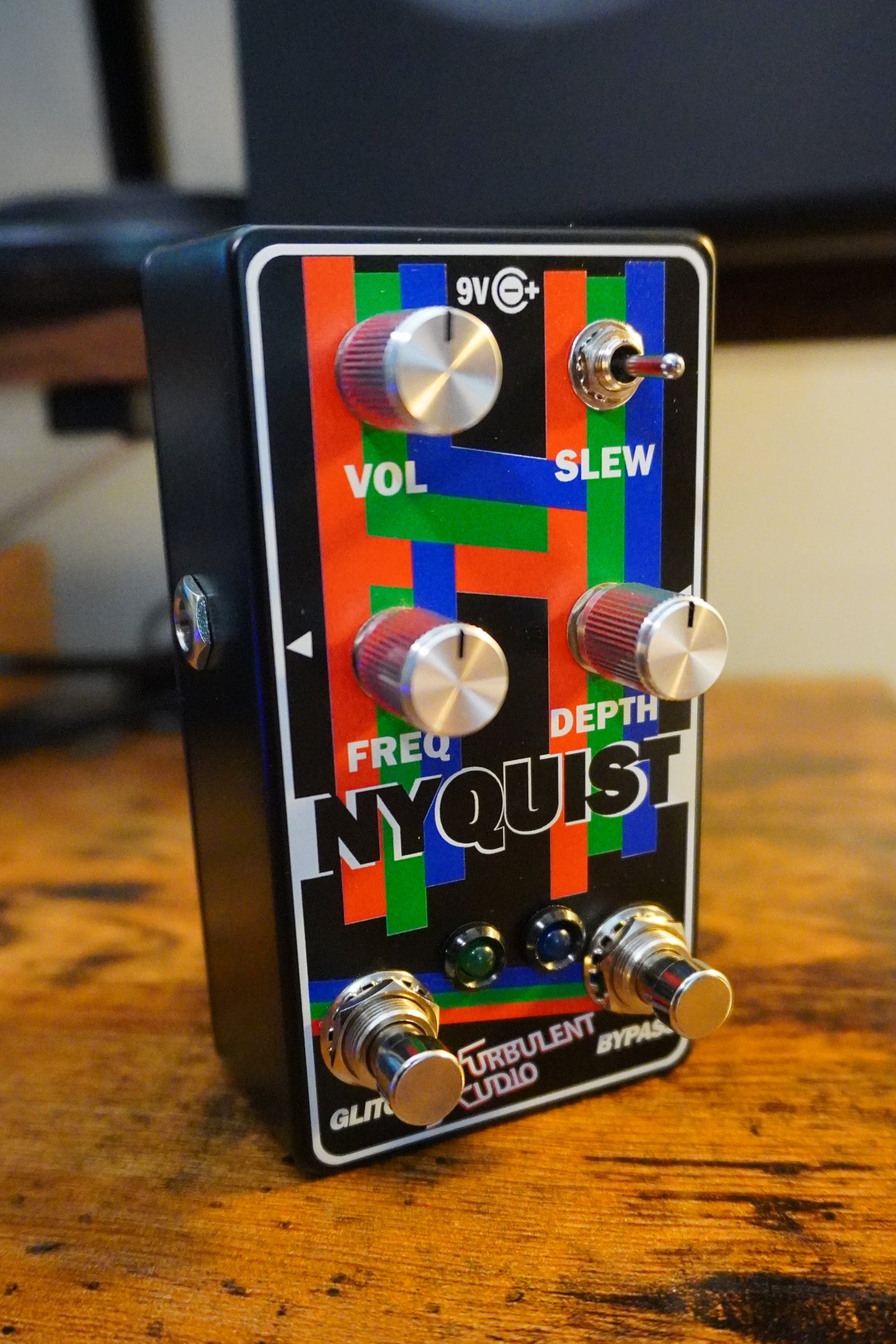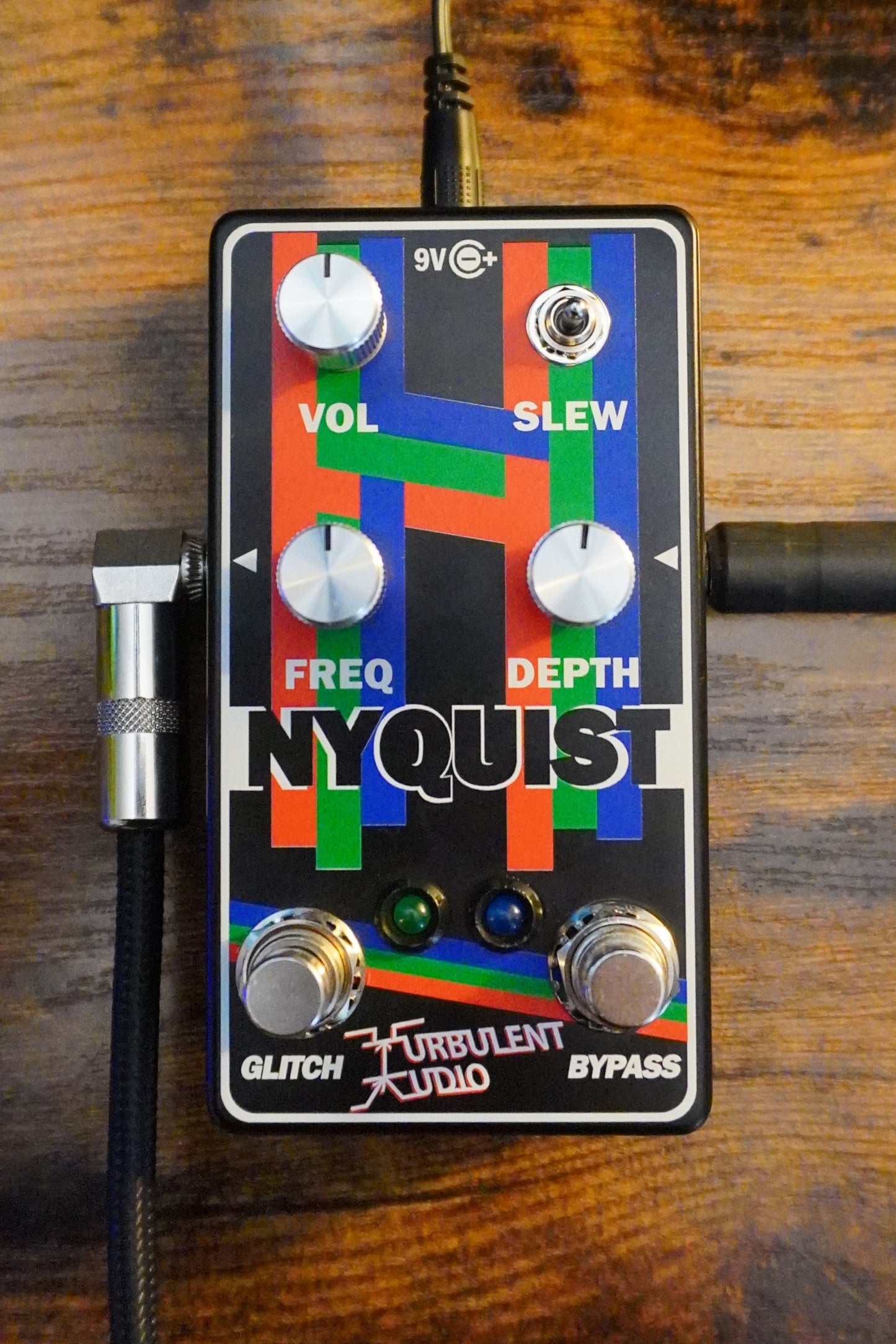NYQUIST
NYQUIST is a bitcrusher made with fully analog components. Complete control over the sampling rate is offered with adjustments for the frequency, depth, and slew. Frequency adjusts the bitcrush rate, depth adjusts the amount of the signal that is bitcrushed / preserved (similar to a blend), and slew changes the body characteristic of the bitcrushed signal by decay of the held voltage.
This pedal can naturally be noisy from the clock. Using the top slew setting, max volume, using later in the chain around modulation pedals / in an effects loop, gaining only before pedal, or using a noise gate can all mitigate this. Nyquist may also react with the pedals before or after it, feel free to experiment and see what happens!
From Light Sample Reduction to Complete Glitch
NYQUIST features two footswitches. The right "bypass" switch activates the pedal. The left "glitch" switch drastically lowers the frequency, creating aliasing of the guitar signal. This effect misrepresent the note played and creates super glitchy and unpredictable sounds.
NYQUIST is compatible for both guitar and bass frequency ranges - just open up the back and flip the switch to the instrument you are using. Each footswitch has true mechanical latching and is true bypass when off. The circuit also includes reverse polarity and overvoltage protection, so no need to worry about accidentially using the wrong power.
TURBULENT AUDIO
NYQUIST
NYQUIST
Couldn't load pickup availability
NYQUIST is a bitcrusher made with all analog components. It features full control of the clock to create sounds that range from light sample reduction to unpredictable aliasing tones.
Frequency and depth are the primary controls. Frequency adjusts the sample rate for bitcrushing and depth adjusts the pulse width to introduce more clean signal similar to a blend.
NYQUIST features a second footswith that drastically lowers the sample rate to create aliasing for ultra glitchy sounds. A slew switch is also offered to introduce decay to held signal to give differing characteristics.
Opening up the back and flipping the internal switch to bass mode, NYQUIST becomes bass compatible by adjusting the clock to better suit a bass' frequency range.
Note that NYQUIST can be inherently noisy from the clock. Max volume, highest slew, not gain staging after the pedal, and using a noise gate can all help to mitigate this.









